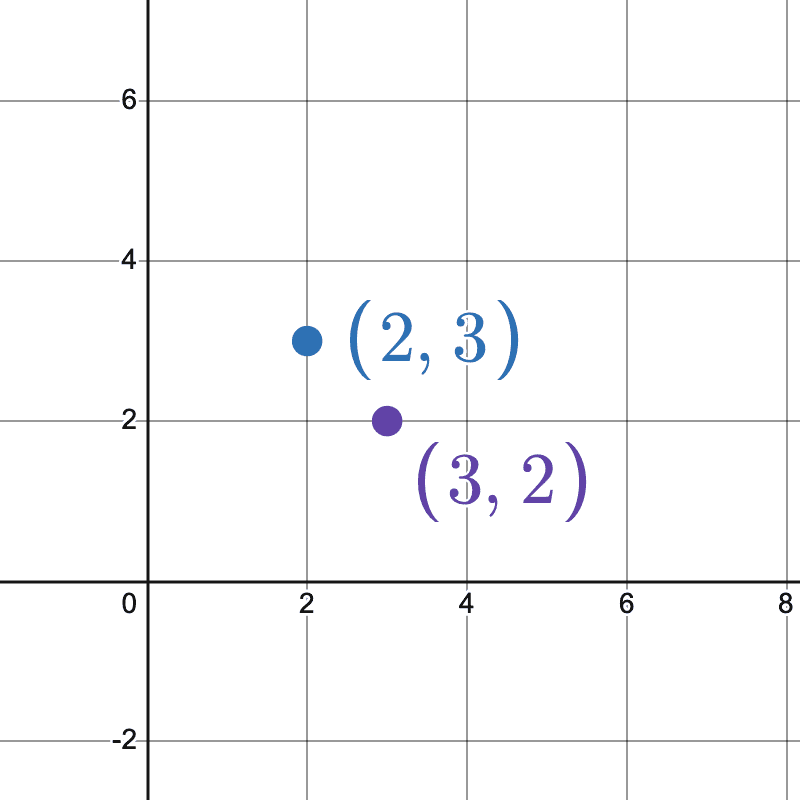
As a whole, mathematics has adopted a standardized form of communicating about functions and sets of operations. Mastering this notation early on in one’s algebra career can open doors to understanding many future topics throughout math. Misunderstanding this notation unfortunately can leave students floundering to understand from the get-go. Hopefully the paragraphs below can building a foundation of notation that becomes a launching pad for your algebra skills rather than a stumbling block.
This was originally published on mathteacherbarbie.com. If you are reading it elsewhere, you are reading a stolen version.
Naming a function
The image illustrates a function as a production machine. In order to produce anything, a machine needs inputs, or raw materials. The machine itself then does something to those inputs and ultimately creates the final product, or an output.

We need a way to refer to the machine itself. In math, that “machine” is really just a set of instructions. For example, the “square root function” or “square root machine” takes inputs and spits out the square roots of those inputs: $25$ becomes $5$, $2$ becomes $\sqrt{2}$ or $1.41…$.
Sometimes that set of instructions can be hard to explain easily, so we give the function machine itself a name. A common name is $f$, short for “function.” However, you might see other letters, symbols, or even longer names. For example, FIRSTNAME is a descriptive function name, implying that the output will be someone’s first name. These types of function names are often found in spreadsheets and computer programming; in math we tend toward shorter (single-letter) names, but don’t have to stick to that.
Function names in this sense are used similarly in math to both spreadsheets and computer programming.
Argument of a function

When we attempt to describe a function, especially in the form of a formula, we need a way to describe “the input.” The challenge is that the input might vary or change. So we assign a variable to represent that input generically. Then we know that every time that variable shows up in the formula, we substitute in whatever input we’re working with at the moment. That variable is called the argument of the function.
In math, the argument of a function is the collective input variable. (This is different from computer programming, which reserves the word argument for specific inputs.) We can change the representation of the argument (e.g., we can use a variable other than $x$ if we want), but this change doesn’t impact the steps the function takes or, ultimately, the output that gets assigned to any specific input.

“Inputs” vs “Outputs”
The input variable is also called the independent variable, especially when there is a real-world context around the function. This is because the ultimate result, the output, usually depends upon which input we choose but we can independently choose which input to use. Have you ever heard the acronym GIGO (garbage-in, garbage-out)? This is a specific real-world meme about this idea. What a production machine produces depends on the raw materials that are put into it each time.
The output variable is similarly called the dependent variable since its value depends upon which input is sent through the machine.
We’ve seen these inputs/outputs (independent and dependent variables) already in algebra. Most often we’ve called them $x$ and $y$, respectively, though sometimes they’ve gone by other names.
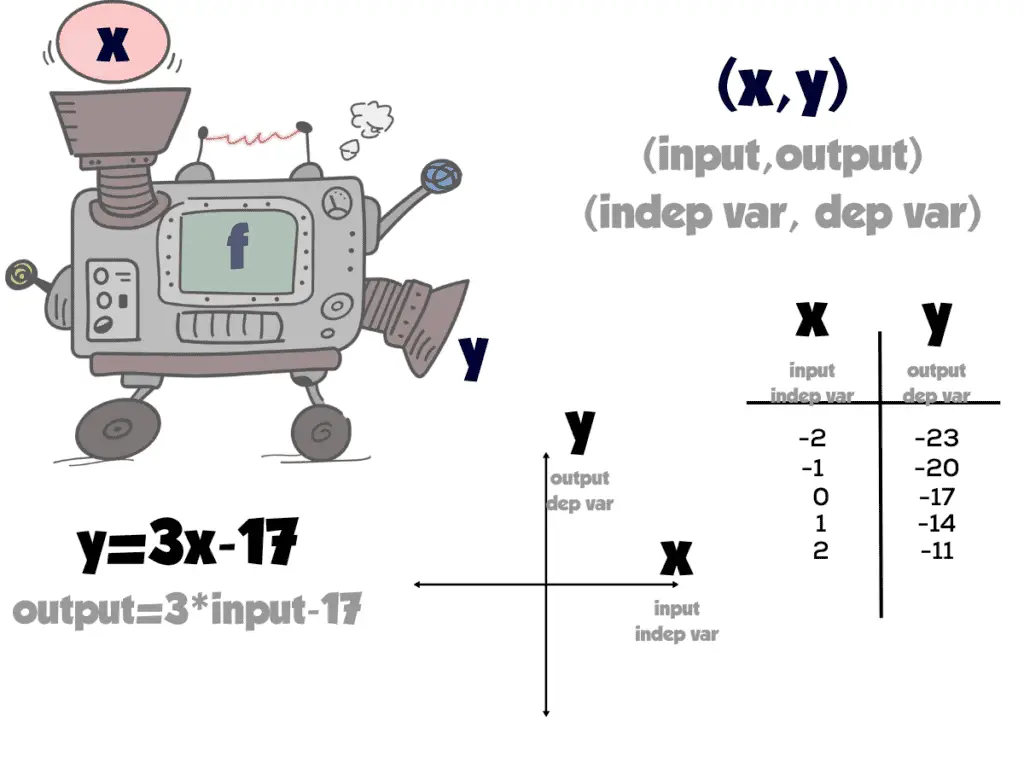
A Note About Parentheses
We use parentheses — ( and ) — a lot in math. It can be really confusing when one pair of symbols means so many different things. Unfortunately, as users of modern mathematics, we’re kind of stuck with them. As you work with math, contextual clues will help you identify which meaning to use each time you encounter them. Here are the main four you will see in early- to mid-algebra.
Putting it all together

When all of these ideas are put together in one symbolic form, $f(x)$ (read: “f of x”) acts as a unified symbol that represents the output when input x is put through the f machine. We need the whole set here — the whole “$f(x)$” to stand in for the generic output. The $x$ by itself represents the input. The $f$ by itself represents the function — the actions performed. The entire $f(x)$ as a whole represents the output we get when we perform $f$ on input $x$.
I can substitute in specific values for the argument. I can change the appearance of the argument, either changing the variable or even using an expression as the argument (such as $f(3x-2)$ or “f of 3 x minus 2”). However, if you leave off any of the three pieces, functionname(argument), you’re talking about some other part of the process, not the output.
Let’s use an example: let’s let $f$ be the “multiply by 3” machine. Then we can actually compute some of our outputs for various inputs. At the same time we can use function notation to describe those same outputs.
$f(x)=3x$
function output at $x$ = formula with $x$ as argument

$f(2)=3/cdot 2=6$
function output at $2$ = formula with $2$ as input value = 6
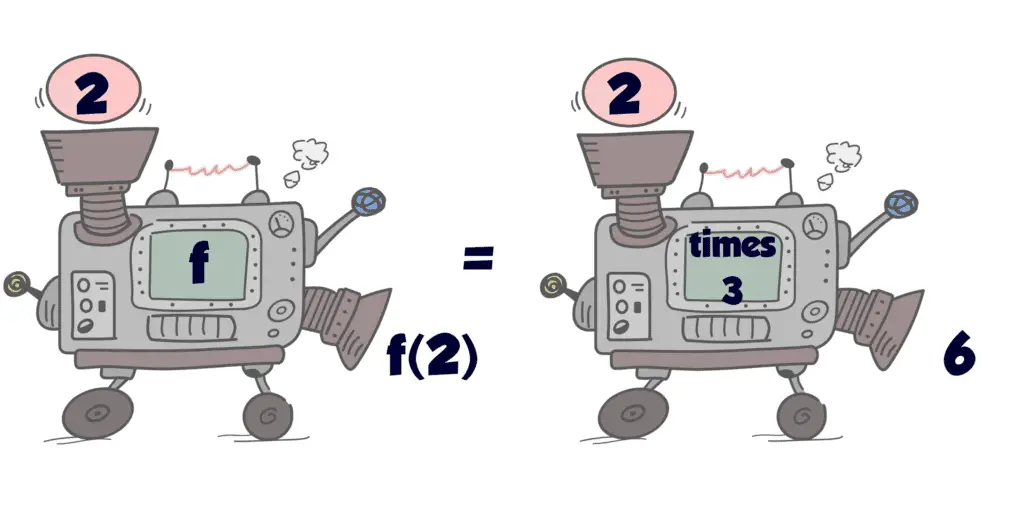
$f(7)=21$
function output at $7$ = 21
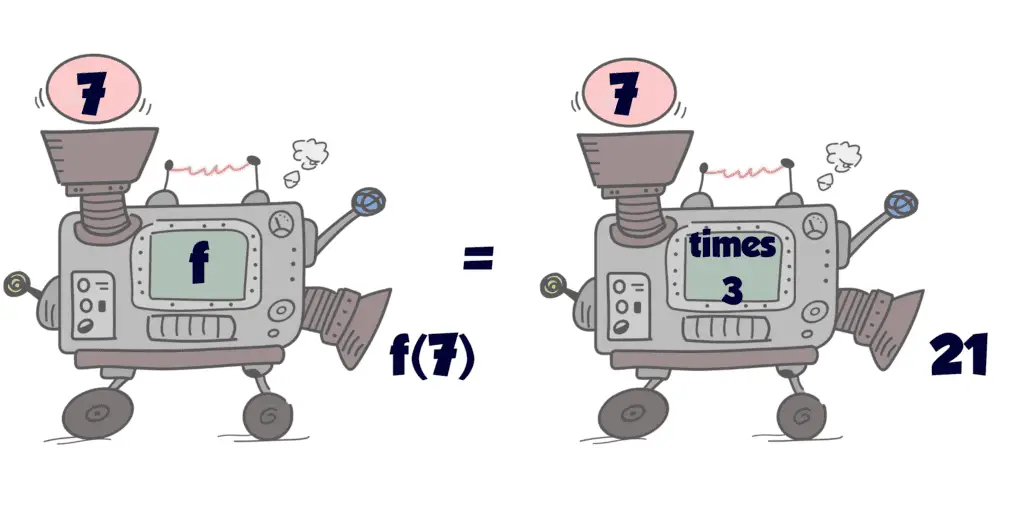
$f(h)=3h$
function output at $h$ = formula with $h$ as argument
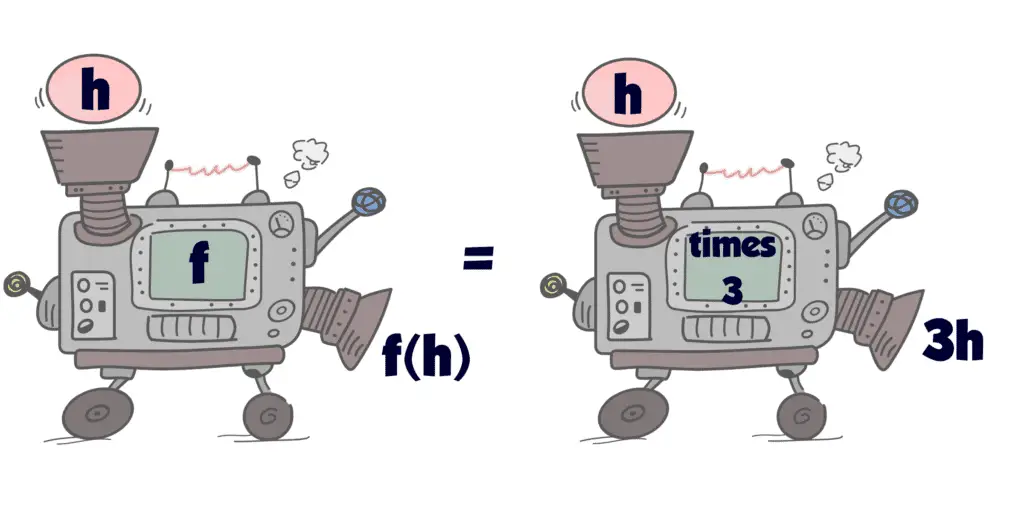
$f(x+5)=3(x+5)$
function output at $x+5$ = formula with $x+5$ as argument
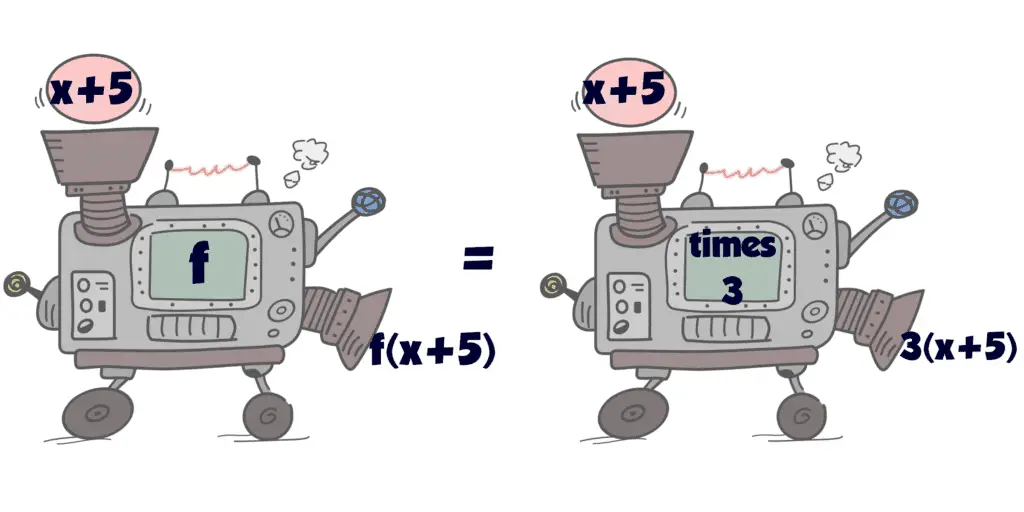
What’s the point of function notation?
Function notation allows us to show where a conclusion came from. The full notation, such as $f(x)$, shows both which function (or set of “instructions”) created the conclusion (or output) as well as which raw materials (input) those instructions were performed on. This gives us much more information than the conclusion (or output) alone.
In this way, function notation allows us to examine the impact of changing the input values. Eventually, these ideas expand to functions that take multiple inputs, allowing us to examine the impact of changing just one input at a time.
Beyond this, it allows us to talk about multiple functions in the same conversation. Perhaps function $f$ performs one set of instructions while function $g$ performs a different set. If we had used $y$ instead of $f(x)$ and $y$ instead of $g(x)$, we wouldn’t know which $y$ we were talking about at any given time. In this way, it also allows us to both compare different sets of instructions against each other as well as to combine the sets of instructions in a variety of ways (a topic for another post).
Further, function notation allows us to write a complicated set of instructions only once and then refer to that same set of instructions over and over again by its name instead of rewriting the whole thing out. Our examples above stayed pretty simple; “multiply by 3” or $\times 3$ are pretty quick to say and/or write. But if we had a different function, such as $f(x)=\frac{32-\sqrt{4x+17}}{2x+4} +3x$, we wouldn’t want to write it over and over again each time we change the input. Instead, we can use its name, $f$, to refer to this complicated set of operations rather than risking typographical errors and/or simply using lots of time to write it out over and over.
These give one of the most common and practical applications of this idea today. When functions are used and their variables are defined carefully, the computing power of spreadsheets allows us to tweak scenarios to answer questions like “what would happen if…?” These ideas also allow general computer programs to accept user input and still run without having to rewrite the program for every possible input.
You’ve Got This!

